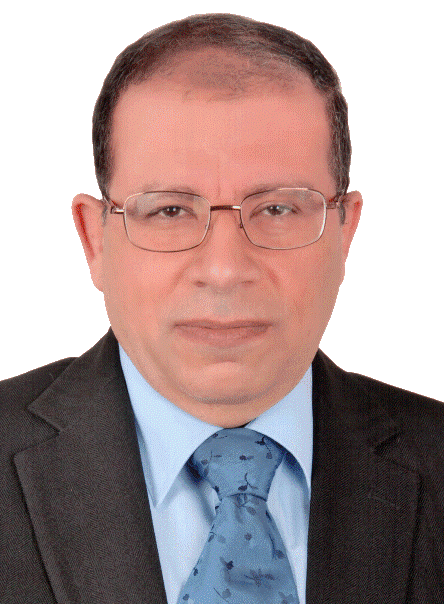Professor of Rhinology & Skull Base Surgery, Ain Shams University, Cairo, Egypt
Department of Oto-Rhino-Laryngology, Faculty of Medicine, Ain Shams University, Cairo, Egypt.
4-
Endoscopic Excision of Inverted Papillomas
Inverted papilloma is a benign tumor characterized by proliferation of the squamous epithelium as extensive finger-like inversions into the underlying stroma. Most of them originate from the lateral wall of the nose. Secondary involvement of the maxillary and ethmoid sinuses is common. Extension to the sphenoid and frontal sinuses also occurs. Radiographic studies may show bony destruction and erosion, usually in the lateral wall of the nose. Malignant change is found in about 10% of inverted papillomas.
Total removal is needed to avoid recurrence. The median recurrence rate with medial wall maxillectomy is 9%. Piecemeal removal by other routes yields a median recurrence rate of 43%. This suggests that complete removal should be the aim and to be tried with all means.
Endoscopic removal of limited tumors involving
the turbinate or other easily resectable structures is widely accepted, easy and
highly successful. Larger tumors should be radically excised whether with the
endoscopic approach or external approaches. In skilled hands, endoscopic
surgery can remove the vast majority of extensive papillomas. Endoscopic medial
maxillectomy is easy to perform with or without division of the nasolacrimal
duct and it can be enlarged to include bone removal of parts of the medial
orbital floor, lamina papyracea and parts of the anterior wall of the maxillary
sinus. Conventional external surgery is needed for involvement of the lateral
parts of the frontal sinus (rare).
Careful histological study of multiple sections of the excised lateral wall of the
nasal cavity is recommended to seek areas of in situ or invasive carcinoma.
Video 13 illustrates Powered endoscopic excision of a recurrent inverted papilloma (after lateral rhinotomy approach) in a 72-year old male patient who refused any further external approaches. The technique in inverted papilloma is to identify the base of the tumor, then to shave all its soft tissue and in addition to drill the underlying bone.
Video 13 "Powered endoscopic excision of Inverted Papilloma"
Video 14 highlights the effective Endoscopic Medial maxillectomy for left inverted papilloma arising from the medial maxillectomy wall in a 35 years female. There was associated right chronic sinusitis.
Video 14 "Endoscopic Medial maxillectomy"

Video 15 highlights Endoscopic Medial Maxillectomy for excision of inverted papilloma arising from the right maxillary sinus in 37 y.o. male patient suffering from right nasal blockage for 2 years. The lesion was hidden behind a deviated nasal septum and CT study suggested an antrochoanal-like lesion. Nasal endoscopy disclosed its true nature (Click Here to view Diagnostic Endoscopy). Endoscopic septal correction facilitated medial maxillectomy (Click Here to view Endoscopic Septal Correction).
The 450 angled endoscope is an essential instrument to accomplish maxillary clearance at its lateral wall, anterior wall and floor. The antral mucosa with the tumor has been successfully peeled from the underlying bare bone except for the healthy mucosa covering the anterior wall of the antrum.
Video 15 "Endoscopic Medial Maxillectomy for excision of inverted papilloma"



